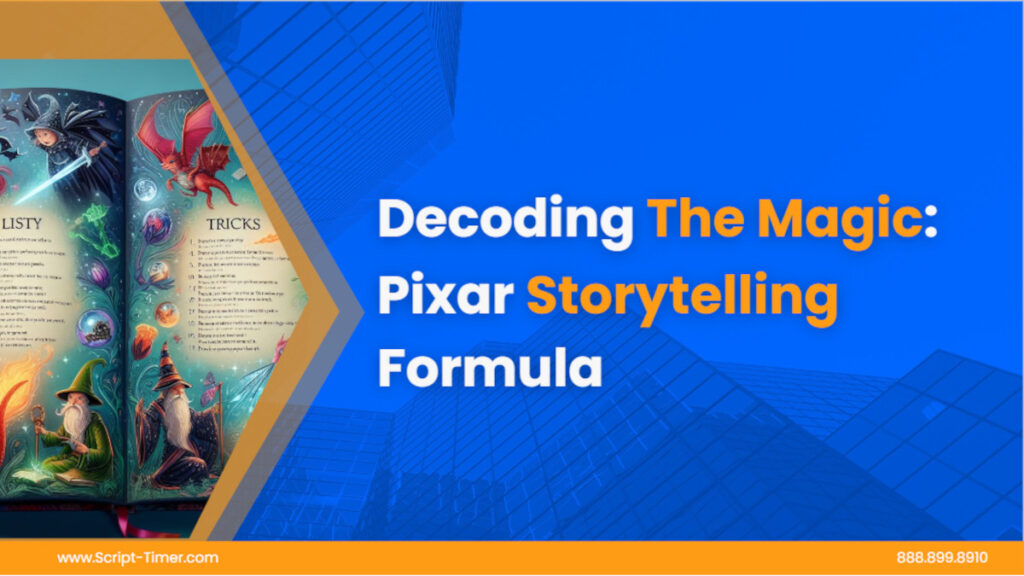Pixar Storytelling Formula is famous for various reasons. Just by reading the name Pixar, we remember heart-touching moments, unforgettable characters, and engaging stories that we’ll probably never forget, and of course there’s no single magic formula that just by following it you’ll have an engaging story, but Pixar has undoubtedly crafted a specific approach that resonates with different audiences around the world.
In this article, we’ll see the specifics on what makes the Pixar storytelling formula special, and what are the steps this formula follows.
1. Relatable Characters: The Heart of Stories
At the core of every Pixar film lies something that makes us feel entertained, and thi is their relatable characters, because these characters aren’t perfect heroes that never make mistakes, they are normal individuals with relatable motivations and struggles. And this is something that makes the Pixar storytelling formula special, because we often feel related to these characters, just think of Merida in “Brave” who’s constantly defying traditions to follow her own desires and create her own path, or Wall-E the lonely robot that’s yearning for connection in an empty world. Pixar excels at creating characters with whom we can identify, laugh with, or even cry with. We feel like we’re inside they’re journey, making us emotionally interested in their outcome.
2. The “Ordinary World” Disrupted
Their stories often begin by showing us the main characters’ “normal life”, their routines, their goals, their struggles, and the comfort (or discomfort) in their life. Then an unexpected incident changes everything in their world, driving the main character into a transformative journey that will make them become better to get their normal life back. An example of this is Toy Story, where Andy receives a new toy called Buzz Lightyear, and completely changes the perfect Woody’s world. This problem perfectly sets the stage for the development of the main conflict we will see through the duration of the movie.
3. Challenges and Internal Conflict
After the unexpected events the protagonist faces different challenges as a result of the main conflict, this forces the main character to adapt fastly, and reveal their inner struggles. For example in “Finding Nemo”, Marlin is naturally overprotective, and this is constantly creating obstacles in his search for Nemo, and he is forced to confront his biggest fears, and these challenges force the main character to improve, creating a great character development.
4. The Ally and The Mentor
The Pixar storytelling formula is also known for using good supportive characters, it starts with the protagonist finding an ally that will join their journey and help them by providing support when the main character needs it. “Finding Nemo” is also a good example of this, Dory who is always forgetting everything is a problem for Marlin at first, but then she becomes a great asset, helping Marlin at all times and staying by his side.
5. The “All is Lost” Moment
Every engaging story needs a moment where we all think that there’s no escapatory for our main characters, and these kind of moments create a sense of urgency and make us wonder if the protagonist is strong enough to come back and save their world.
6. Facing The Challenge and Transformation
After the “All is Lost” moment where we think there’s nothing the protagonist can do to solve the conflict, the protagonist gathers their strength and faces the main conflict directly, this is where they use the lessons previously learned to overcome their challenges and save their world. Like in “Up” where Carl loses Ellie, plunging him into grief and isolation and he needs to confront his loneliness.
7. The Resolution
A satisfying and well-crafted resolution is the key to create a successful story, and Pixar is the master at doing this. Their resolution always ties up loose ends, provides a satisfying closure for the characters, and reinforces the film’s main theme, leaving us not only with a feeling of satisfaction but also with a new lesson learned. The resolution always ends with a happy ending for the main characters, and them getting their normal word back.
8. Themes That Engage Across Ages
The Pixar storytelling formula not only focuses on delivering fun and adventure to their audience, but also in delving into universal themes that make people of all ages feel related. They use themes like friendship, loss, love, or self-discovery to ensure every person who watches their movies feels a connection to the movie’s main theme and story.
So. the next time you’re watching a Pixar movie, try to pay attention to their masterful storytelling at play, their films are much more than just entertainment, they’re lessons that will be useful in real life, and if you want to start creating stories that resonate with audiences, make sure to sign up to Script Timer to unlock all the scripts tools you need to take your stories to the next level!
https://script-timer.com/script-timer-ai/



